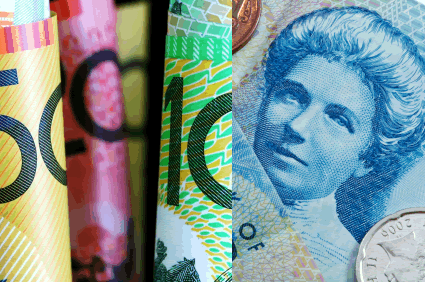Australian and NZ dollar: NZD Outperformed by AUD vs Pound Sterling as Markets Less Bullish on NZ Rates
- Written by: Gary Howes
It's been a long while since we have seen the Australian dollar so emphatically outperforming the New Zealand dollar against the British pound, but that is just the case at present.
- The pound sterling to New Zealand dollar exchange rate is trading 0.12 pct higher at 2.0195.
- The pound sterling to Australian dollar exchange rate is trading 0.99 pct in the red at 1.8770.
Note: Our AUD + NZD quotes are taken from the wholesale spot markets. Your bank will charge a spread at their discretion when passing on a retail rate. However, an independent FX provider is so well placed on the market that they are able to deliver you up to 5% more currency. Please learn more here.
This morning HSBC Chinese Manufacturing PMI posted a slight decline to 49.5 from 49.6. A reading below 50 indicates an industry contraction.
These figures add to evidence suggesting that economic momentum in China (a significant trading partner with Australia) is slowing.
"Despite this the Aussie is holding up, and the Fed’s decision to taper hasn’t affected the currency too much. The rate is currently at 1.8847 but we expect the pound to rebound slightly and trade around 1.8880," says Sasha Nugent at Caxton FX.
The Aus dollar was pressured yesterday on risk aversion as the central banks in the EM market were unable to avoid further money outflow even though they raised the interest rates by substantial amounts.
A notable recovery in the EM sector today will be the key driver behind the Aus dollar recovery.
It must be kept in mind though that the outlook for the Aus dollar remains uncertain. The obvious near-term risk is a return of EM jitters. There is also the issue of US tapering and the impact that has on demand for Australian denominated assets.
Citigroup analysts continue to see QE ending this fall, followed by an end to reinvestment early next year, and preparations for rate hikes closer to mid-2015. This will likely be USD-supportive and may undermine the AUD.
"Technically, AUD/USD may fall further to 0.8579, with resistance at 0.8821-0.8888," says a note from Citigroup.
New Zealand dollar (NZD) hurt by RBNZ inaction
Update: "The kiwi fell to a one-month low against the dollar after the RBNZ left lending rates unchanged yesterday at 2.50%, as widely expected but reiterated that the value of the NZD remains a headwind for the economy and continues to keep a lid on price pressures. The commentary dampened some expectations for higher rates in the months ahead." - Omer Esiner at Commonwealth Foreign Exchange.
In their monetary policy meeting last night, the RBNZ decided to keep interest rates at 2.50%.
Governor Graeme Wheeler claimed the interest rate will have to rise soon as inflation pressures build.
"The market has now shifted towards a rate increase in March and the decision to keep rates on hold has caused some weakening in the NZ dollar. New Zealand Trade Balance will be released this evening (21:45) and RBNZ Governor Wheeler will also speak. The market will be looking for clues as to when to price in the rate increase and we could see some volatility on the back of his comments," says Nugent.
Markets: What you should know
The Canadian dollar reached a new low overnight as investors continue to fear contagion risks in emerging markets and markets digest yesterday's Fed decision to taper QE a further $10B/month.
Preliminary Q4 GDP in the US came in marginally below expectations (3.2% vs. 3.3%); however, the composition was fairly positive, with inventories accounting for only a 0.42% print. Personal consumption made up more than half of the GDP growth; the bad news was fixed investment/capital expenditures fell to a mere 0.14% from 0.89%.
China posted a weaker than expected Manufacturing PMI in January, 49.5 vs. 49.6, confirming the economic contraction is ongoing. Shipping demand has certainly felt the impact, as the Baltic Dry Index collapsed 50% from December highs to a 5 month low. Fears of a default in China’s shadow banking system have amplified, with many analysts confident that a default is inevitable as economic growth slows.





